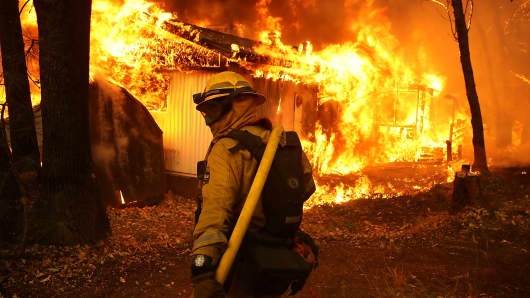Climate-related disasters have cost the world $650 billion over the last three years, and North America is shouldering most of the burden, according to a new report from Morgan Stanley.
While governments and corporations are taking steps to mitigate the impacts of climate change, Morgan Stanley says private enterprises need to strongly consider preparing for a world gripped by more frequent and intense weather events, rising sea levels, changes to agriculture and the spread of infectious disease. Those outcomes will have a lopsided effect across industries, raising risks for some and creating opportunities for others.
"We expect the physical risks of climate change to become an increasingly important part of the investment debate for 2019," Morgan Stanley equity strategists Mark Savino, Jessica Alsford and Victoria Irving said in a research note Wednesday.
At $650 billion, the three-year price of climate disasters totals just over a quarter of a percent of global gross domestic product, the analysts say. The investment bank warns that the situation may only get worse, noting that damages associated with global warming could total $54 trillion by 2040, according to a UN panel composed of the world's top climate scientists.





